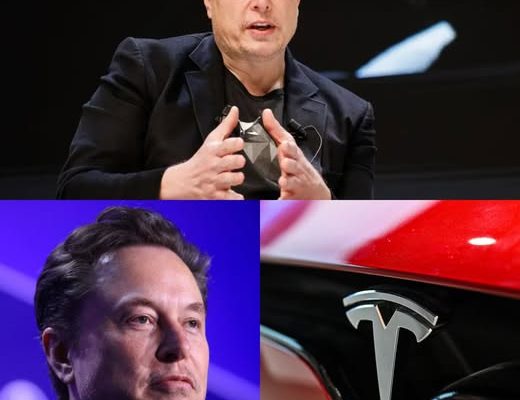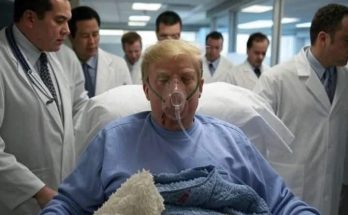

Elon Musk has long been the face of bold and ambitious promises, often pushing the envelope on technological advancements that could change the world. One of his most audacious claims, the launch of Tesla’s robotaxi service, has been in the works for over six years.Now, it seems that Musk is ready to finally deliver on this long-awaited promise, with a tentative launch date set for June 22, 2025, in Austin, Texas. This development has stirred up waves of excitement and skepticism, as the world watches to see whether Tesla will truly live up to its vision of revolutionizing transportation through autonomous vehicles (AV).Musk has often proclaimed that Tesla’s future lies in the realm of autonomous vehicles, and the robotaxi service is a cornerstone of that vision. If successful, the robotaxi service would provide a fleet of self-driving cars capable of picking up and dropping off passengers without a human driver at the wheel.These vehicles would not only operate more efficiently than traditional human-driven cars but could also generate a significant revenue stream for Tesla, all while reducing the environmental impact of transportation.

In a recent social media post, Musk confidently stated, “I don’t see anyone being able to compete with Tesla at present.” This declaration echoed his assertion during Tesla’s April earnings call, where he predicted that Tesla would capture 99% of the robotaxi market share, a seemingly bold yet characteristic claim from the CEO.Musk’s confidence is rooted in the belief that autonomous vehicles will fundamentally change how we think about transportation, making it more efficient, cost-effective, and safer. But, as with any cutting-edge technology, there are significant challenges that Musk and Tesla must overcome to realize this vision. While Tesla has continued to develop its “Full Self-Driving” (FSD) software, which powers its robotaxi initiative, there are critical concerns about safety, viability, and competition.While Tesla is confident in its ability to dominate the robotaxi market, other companies are already ahead of them. Google’s Waymo, one of the leaders in autonomous driving technology, has been operating a fully functional robotaxi service for several years.With a fleet of 1,500 vehicles already in operation, Waymo provides approximately 250,000 paid rides per week in cities like San Francisco, Phoenix, Los Angeles, and Austin. Waymo’s success has been driven by a carefully developed and tested autonomous driving system, which uses a combination of cameras, radar, and lidar (light detection and ranging) to detect obstacles and navigate safely.

Unlike Tesla, which relies solely on cameras and artificial intelligence (AI) for its FSD system, Waymo’s use of lidar has been a significant factor in its success. Many experts believe that lidar is a safer and more reliable option for detecting obstacles, especially in low visibility conditions, such as fog or sun glare.In contrast, Tesla’s reliance on cameras alone has raised concerns, particularly after several accidents involving Tesla vehicles in which the FSD system failed to detect pedestrians or other hazards.Despite the technological differences, Musk has consistently downplayed the importance of lidar. “People don’t shoot lasers out of their eyes to drive,” Musk wrote in a social media post, dismissing lidar as “unnecessary” and “friggin stupid.”While Tesla’s FSD system may offer a cost advantage by eliminating the need for expensive lidar sensors, many experts believe that this could be a risky tradeoff when it comes to safety.However, Tesla’s strategy is built around scale and efficiency. Musk believes that robotaxis can operate far more hours in a day than human drivers, thus increasing the revenue potential for Tesla owners who rent out their vehicles for use in the robotaxi fleet. This model could provide a lucrative return for Tesla owners while driving down costs associated with car ownership.

The challenge for Tesla is not only the technological development of the robotaxi service but also the business model itself. Traditional automakers like General Motors and Ford have already pulled back from their autonomous vehicle ambitions, citing the high costs involved in developing such technology and the competitive nature of the robotaxi market.In fact, Ford has entirely abandoned its autonomous vehicle efforts, while GM has scaled back its plans for a similar service.One of the primary hurdles that Tesla faces is the economic viability of robotaxis. While Musk’s vision for Tesla is undoubtedly ambitious, experts like Bryant Walker Smith, a scholar at Stanford Law School, argue that the real competition may not come from other autonomous vehicle companies but from human drivers.Services like Uber and Lyft rely on human drivers who can operate older vehicles with minimal overhead costs, making it difficult for companies that need to pay engineers, mechanics, and remote assistance teams to compete.Musk’s bold predictions about Tesla’s robotaxi future also come at a time when the company is facing financial difficulties. Tesla’s sales and profits have taken a hit in recent months, with the company reporting a 53% drop in net income for 2024. Tesla’s stock price has also dropped significantly, partly due to Musk’s political activities and the backlash surrounding his personal life.

The company is under increasing pressure to deliver a game-changing product to restore investor confidence and improve its financial performance.The robotaxi service could be Tesla’s ticket to a turnaround, but its success is far from guaranteed. While Musk has repeatedly promised that the service would be launched in the near future, it is worth noting that he has made similar promises for years without delivering.In fact, Musk first stated that robotaxis would be on the road within a year as far back as 2019, and the project has consistently missed its deadlines.Some analysts are skeptical that the June 22 launch will be any different from previous false starts. Gordon Johnson, an analyst at GLJ Research, predicted that the robotaxi rollout would be more of a “proof of concept” exercise than an actual commercial asset for sale.Given Tesla’s history of ambitious promises that often fall short, it remains to be seen whether the company can live up to its lofty expectations this time around.

For Tesla, the launch of its robotaxi service could be a make-or-break moment. If successful, it could provide a significant new revenue stream and cement Tesla’s position as a leader in autonomous driving technology. However, the company faces immense challenges, including fierce competition from established players like Waymo and Uber, safety concerns surrounding its FSD system, and the economic realities of competing with human drivers.Musk has long touted Tesla’s ability to reshape the world of transportation, and the robotaxi service is a critical component of that vision. Whether or not Tesla can overcome the technical, financial, and regulatory hurdles standing in its way remains to be seen.What is clear is that the world will be watching closely when Tesla’s robotaxi service hits the streets of Austin on June 22 – assuming that date sticks.In the end, Musk’s unwavering confidence in Tesla’s future may be justified. After all, he has already disrupted multiple industries, from electric vehicles to space travel. But whether Tesla’s robotaxi service will live up to the hype remains one of the most pressing questions in the tech world today.



